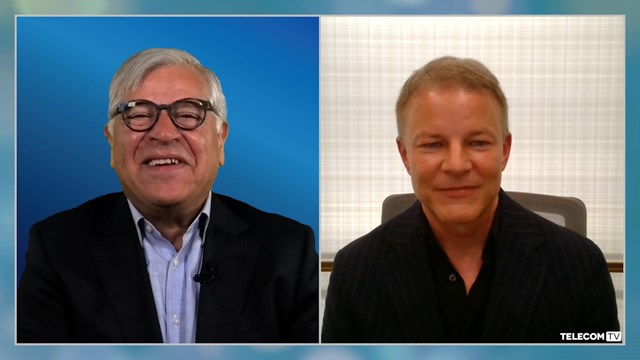
- BT exposes its APIs with Nokia
- Crown Castle CEO caves in to investor pressure
- Italy’s Fastweb invests in Nvidia tech for AI
In today’s industry news roundup: BT is the latest to embrace the telco-as-a-platform approach; Crown Castle's CEO steps down under activist investor pressure; Fastweb to offer AI IaaS to its customers following investment in Nvidia hardware; and more!
BT is the latest telco to embrace the potential business opportunities afforded by APIs that can expose network functionality to third-party applications. The UK telco is to use Nokia’s Network as Code platform, and its associated software development kit (SDK) and application programming interface (API) development tools, to give developers access to the telco’s network functionality and data. “5G-era networks are fundamentally software-based and rich in capabilities – such as improving network quality on demand – which can really make a difference to enterprises and consumers in ways that were not possible years ago,” noted Reza Rahnama, managing director of mobile networks at BT Group. “We are excited to work with Nokia and its new platform to help us better tap into those capabilities that we have been aggressively building into our 5G network,” added Rahnama. Nokia has been focused on helping telcos with their network API strategy for some time and launched its Network as Code platform in September this year, when it also announced a telco-as-a-platform partnership with US 5G operator Dish Wireless. What’s important to note is that Nokia has developed its offering based on specifications developed by the Linux Foundation’s Camara project and the closely aligned GSMA Open Gateway initiative, both of which count Nokia as a contributor. That initiative is starting to gain traction with operators around the world, with telcos in Sri Lanka and Brazil having already made significant progress, while the importance of a shift towards a telco-as-a-platform strategy was highlighted earlier this year by Juan Carlos Garcia Lopez, SVP of technology innovation and ecosystem at Telefónica (see The time is right for network API services, says Telefónica’s Garcia).
Elliott Management isn’t known as an activist investor for nothing. It has been piling pressure on neutral network asset operator Crown Castle, which runs two main operating units (one focused on telecom towers and the other on fibre network infrastructure), to revamp its strategy and that pressure has taken its toll on Jay Brown, who is stepping down as the company’s CEO with effect from the middle of January 2024. He will be replaced on 16 January by current board member Anthony Melone, who has a great deal of telecom networks experience as the result of a 15-year spell at Verizon, where he was CTO between 2010 and 2015. The Elliott team can hardly hide its glee at the news. “The leadership transition that Crown Castle announced… marks a step in the right direction toward a new chapter of value creation at the company,” it noted in this announcement. “Consistent with our previous statements, we believe that additional significant changes are needed to ensure that Crown Castle is best positioned to fulfil its potential for shareholders,” it added. Expect further ructions at Crown Castle, where the share price currently stands at $115.37, up by about 6% since the Elliott team started leaning on the towers company in late November.
Italian network operator Fastweb, which is part of the Swisscom empire, has invested in 31 Nvidia DGX H100 systems that it plans to install in one of its datacentres in Lombardy. The system, which uses the latest Nvidia DGX SuperPOD reference architecture, features 248 Nvidia H100 Tensor Core graphics processing units (GPUs) and is expected to be operational by the first half of 2024. The operator says it will use the cluster for AI processing and will make the resources available on an infrastructure-as-a-service (IaaS) basis to its customers for the development of AI and generative AI (GenAI) applications. “With this strategic investment, Fastweb strengthens its vocation as an enabler of the country’s digital transformation and creates the foundation to develop AI-based services with a national and sustainable approach,” stated Fastweb CEO Walter Renna. “We will make available to our enterprise customers, public administrations and the entire Italian ecosystem a high-performing, transparent and explainable system for the development of GenAI applications,” he added. Ronnie Vasishta, SVP of Telecom at Nvidia, added: “As the industry turns its focus toward cloud computing, the telcos of tomorrow will not just be providers of connectivity. Fastweb’s investment in the digital transformation of Italy is a profound step toward bringing powerful, efficient and localised computing to AI pioneers in the country,” he added.
Spanish operator giant Telefónica is reportedly set to remove and replace the final tranche of Huawei software that it is currently running in its domestic 5G standalone (SA) core platform, according to Expansion. The newspaper reports that the current Huawei-supplied user plane function (UPF) stack is to be replaced by an alternative from a European supplier, which points very strongly towards either Ericsson, which is already Telefónica’s main core platform technology provider, or Nokia.
UK telecom regulator Ofcom has opened a consultation with Britain’s telcos on how current resilience guidance parameters need to be updated to take into account “a new framework for security and resilience” that came into force in October 2022. The notion behind the consultation is “to provide greater clarity on how UK telecoms companies can reduce the risk of network outages” and to codify the measures and “security duties” that telcos should carry through to minimise the likelihood of outages in the first place. These days, the global industry and the media generally clump telcos together under the blanket terminology of CSPs (communications service providers) and/or DSPs (digital service providers), Ofcom, however, refers to them as PECS (public electronic communications services) and PECNs (public electronic communications networks). In a statement, Ofcom said that by invoking a consultation period with PECS and PECNs, it is discharging its duty to ensure they “identify, prepare for and reduce the risk of anything that compromises the availability, performance or functionality of their network or service”. To this end, Ofcom is minded to introduce three new areas of telco responsibility to its list. Firstly, they will be required to ensure that their networks are designed to avoid, or reduce, single points of failure. Secondly, they will have to ensure that key infrastructure points have “automatic failover functionality” built in, so that traffic can be immediately diverted to another device or site when any equipment fails. Thirdly, telcos and service providers must ensure that all necessary processes, tools and training are in place to guarantee network and services resilience. Simultaneously, but separately, “this consultation also includes a separate call for input on power backup for mobile radio access networks (RAN). These networks are dependent on electrical power to function, and outages can cause significant and extensive service disruption for customers.” In summary, Ofcom stated: “The proposed guidance… describes a range of practices in the architecture, design, and operational models that underpin robust and resilient telecoms networks and services as well as more specific measures that we expect communications providers to consider.” The consultation period will be open until Friday 1 March 2024 and Ofcom intends to publish its decision on resilience guidance, and next steps on mobile power resilience, this coming summer.
- The staff, TelecomTV
Email Newsletters
Sign up to receive TelecomTV's top news and videos, plus exclusive subscriber-only content direct to your inbox.




